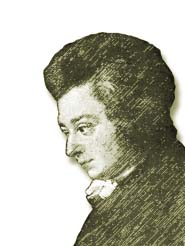
 |
|
| An Introduction to the mysteries of Okinawan Music and its tremendous history. Each of the various music styles that have blossomed throughout history in Okinawa has its own story woven into it. In this column we explore the threads of the mystery of this magnificent musical legacy. | |
| (Reference: "Okinawa Uta no Tabi" by Makoto Aoki) | |
| - Kenchu Kochi - (Tansui Uekata) 1633-1683 < The Bach of Ryukyuan Classical Music > While the Satsuma rule over the Ryukyu Kingdom, which began in the early 17th century, weighed heavily on the hearts of people, the singing and dancing arts were quite vigorous in this era. With this background, and concerned that the Ryuka traditions would become extinct because of the dominance of mainland Japanese performing arts, Tansui Uekata worked to reinvigorate Ryuka and revitalize the ancient songs. He also helped preserve the songs and methods of playing the Sanshin (Okinawan samisen). Among his many works he is noted for "Chikuten-bushi", "Janna-bushi", "Shuri-bushi", "Shudun-bushi", "Akatsuki-bushi", and "Hai-Chikuten-bushi." - Chokun Tamagusuku - 1684-1734 < The Wagner of the Ryukyu Classical Music Era > Chokun Tamagusuku was the magistrate in charge of entertainments for the most important events in the Ryukyuan Royal court, the banquets for the Chinese investiture envoys. Entertainments for these occasions were called Ukwanshin-udui or Crown Ship Dances. During his visits to Satsuma (Kyushu) and Edo (Tokyo) he absorbed influences from Noh and Kabuki in the creation of a new Okinawan performance art. And in 1719 it was debuted as Kumiodori or Okinawan opera. It was a unique stage art created by combining Noh and Kabuki together. Tamagusuku Chokun's works include "Nido-Tekiuchi" (Revenge of the Two Boys), "Shushin Kane Iri" (Passion and the Bell), "Mekaru-shi" (Master Mekaru), "Koko no Maki" (Filial Piety), and "Onna-mono-gurui" (The Madwoman). - Choki Yakabi - 1716-1775 < The Beethoven of Okinawan Classical Music > Born in 1716. He was stricken with an eye disease that later made him go blind. Yakabi was recognized as a musical genius from his childhood. On orders from the Shuri royal court he traveled to Kagoshima and, using the songs from Noh theater and Chinese music as reference, made scores for Ryukyuan music. Based on his studies, he also reformed and made additions to the Ryukyu classical music of his time. Yakabi is credited with one of the defining pieces of Ryukyuan classical music, the song "Nubui-Kuduchi". - Sekiko Chinen - 1761-1828 < Okinawa's Mozart > While not a noble by birth, Sekiko Chinen's natural genius for Okinawan classical music gained him access to the court, where he worked on the Crown Ship entertainments. He was responsible for many innovations in Ryukyuan classical music. Keeping up with the flow of the times, he made innovations in the methods of singing and playing the music as well as creating new musical compositions. Chinen quickly increased the repertory of classical music. |
 W.A.Mozart |
||
| Photo : Hiroshi Shimabukuro (STUDIO PLANET) | |||